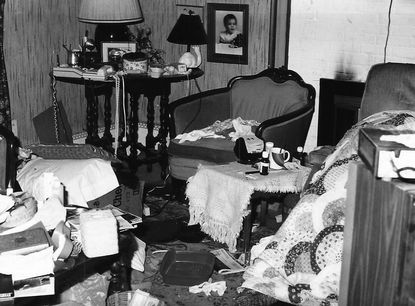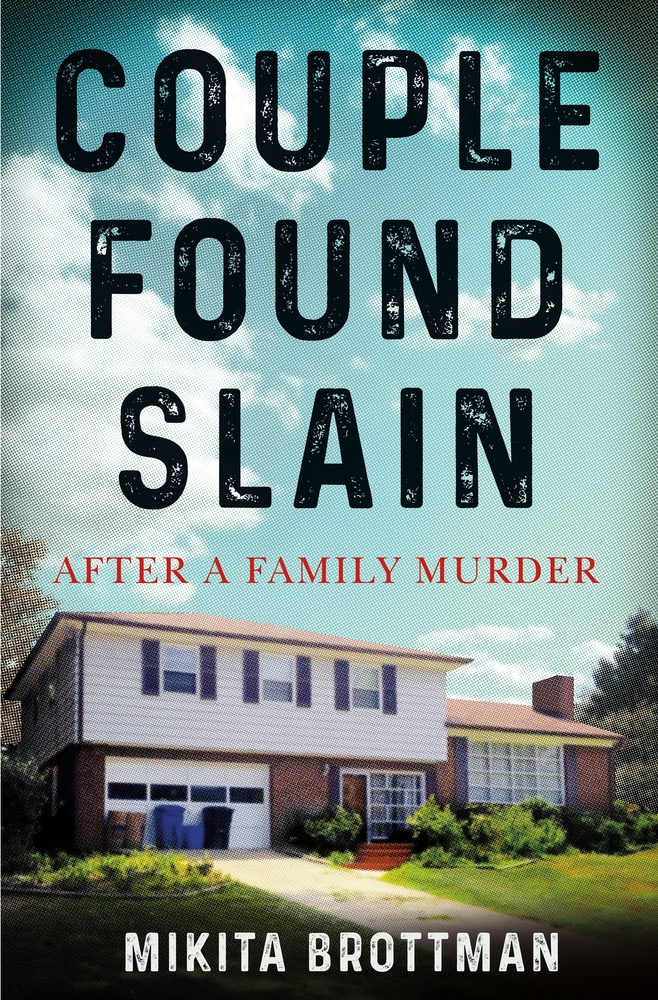Mikita Brottman’s deep dive into this suburban true crime goes beyond the ‘whodunit’, and even the ‘whydunit’ aspect. Instead, she focuses on the aftermath from the point of view of the murderer.
In February 1992 Brian Bechtold killed his parents. He turned himself in to the police, saying he’d been possessed by the Devil when he did it. During the investigation and the lead up to the trial, Brian was diagnosed with schizophrenia. A jury eventually ruled him not criminally responsible for his actions and he was sentenced to time in a psychiatric facility. Brian was just 22.
Brottman met Brian more than twenty years later when she was leading a fiction writing group at the hospital. Meant to be an outlet for the patients, she led discussions and encouraged them to write their own stories. She slowly built up a rapport with Brian and began to look into his case. She knew it was unusual for a patient to remain in the same facility that long, and he seemed intelligent and stable. What she uncovered became this book.
I wondered what he’d done that had caused him to be kept locked up for over two decades, but I was hesitant to ask. Patients rarely discussed their crimes, even with one another. … For most, the subject was too perilous to be broached except in the vaguest of terms – nor were their offenses even mentioned in therapy sessions, I gathered, which were focused mostly on current symptoms and medication adjustments. This confused me at first, given that some of the patients at the hospital, even those in my group, had committed high-profile crimes that had been covered extensively in the local and sometimes national media, and that watching television seemed to be everyone’s main activity. … It was often difficult for me to connect the the police mug shots I saw online, of mad-eyed, disheveled, dangerous-looking berserkers, with the quiet, polite, good-natured patients in my group. ~ Pg. 64
Brottman pieces together Brian’s childhood with as much care as his post-sentencing case file. And while there is no simple answer to how society should deal with murderers, it’s fair to hope that psychiatric facilities are nothing like the nightmarish asylums from the films. There may not be evil quacks employing the water cure, but there is a certain sense of unfair futility that would make anyone insane.

Brian noticed there was no way to ‘win.’ Therapists wanted to see personal growth and a sense that the patient understood their crime — insight into their condition. But if they showed emotion, doctors would increase medication and security level. If they resisted taking additional medicine, it was seen as evidence of a lack of insight.
The book takes a wider, philosophical view of the question what are psychiatric hospitals meant to do. Are they supposed to treat and rehabilitate? Or are they meant hold people serving sentences that have to fixed length? Should patients who commit parricide (who are confirmed to have mental illness) be considered less of a risk because the root of their delusion is now gone? It’s been shown that they are among the least likely to reoffend and have a high rate of rehabilitation.
The book shines a light on a little-seen conundrum. It is disturbing less for its true crime nature, but for the uneasiness left in the pit of your stomach. What if someone you love, or even you yourself, become entangled in this ‘system?’ How do we understand mental health in relation to criminality? Perhaps Brian’s story can become a case study.
[icon name="star" class="" unprefixed_class=""][icon name="star" class="" unprefixed_class=""][icon name="star" class="" unprefixed_class=""][icon name="star" class="" unprefixed_class=""][icon name="star-o" class="" unprefixed_class=""]My thanks to Henry Holt for the review copy.
Publisher: Henry Holt and Co. (July 6, 2021)
Language: English
Hardcover: 256 pages
ISBN-10: 1250757444

